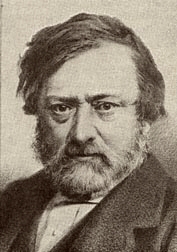|
Thomas Hailes Lacy
Thomas Hailes Lacy (1809 – 1 August 1873) was a British actor, playwright, theatrical manager, bookseller, and theatrical publisher. Life Lacy made his West End stage debut in 1828 but soon turned manager, a position he held from 1841 at The Theatre in Sheffield (destroyed by fire in 1935). On 25 January 1842, Lacy married actress Frances Dalton who was an actress known as Fanny Cooper. She was taking leading parts at Covent Garden and the Haymarket. The marriage probably took place at St Paul's church in Covent Garden, but maybe in Sheffield. He and his wife toured England together. Lacy's roles included Jacques ('' As You Like It'') and Banquo ('' Macbeth''). He would appear with his wife when she played Countess Wintersen in ''The Stranger'', Nerissa in ''The Merchant of Venice'', and Virginia in James Sheridan Knowles James Sheridan Knowles (12 May 1784 – 30 November 1862) was an Irish dramatist and actor. Biography Knowles was born in Cork. His father was the ... [...More Info...] [...Related Items...] OR: [Wikipedia] [Google] [Baidu] |
Thomas Hailes Lacy
Thomas Hailes Lacy (1809 – 1 August 1873) was a British actor, playwright, theatrical manager, bookseller, and theatrical publisher. Life Lacy made his West End stage debut in 1828 but soon turned manager, a position he held from 1841 at The Theatre in Sheffield (destroyed by fire in 1935). On 25 January 1842, Lacy married actress Frances Dalton who was an actress known as Fanny Cooper. She was taking leading parts at Covent Garden and the Haymarket. The marriage probably took place at St Paul's church in Covent Garden, but maybe in Sheffield. He and his wife toured England together. Lacy's roles included Jacques ('' As You Like It'') and Banquo ('' Macbeth''). He would appear with his wife when she played Countess Wintersen in ''The Stranger'', Nerissa in ''The Merchant of Venice'', and Virginia in James Sheridan Knowles James Sheridan Knowles (12 May 1784 – 30 November 1862) was an Irish dramatist and actor. Biography Knowles was born in Cork. His father was the ... [...More Info...] [...Related Items...] OR: [Wikipedia] [Google] [Baidu] |
The Tower Of London (play)
The Tower of London, officially His Majesty's Royal Palace and Fortress of the Tower of London, is a historic castle on the north bank of the River Thames in central London. It lies within the London Borough of Tower Hamlets, which is separated from the eastern edge of the square mile of the City of London by the open space known as Tower Hill. It was founded towards the end of 1066 as part of the Norman Conquest. The White Tower, which gives the entire castle its name, was built by William the Conqueror in 1078 and was a resented symbol of oppression, inflicted upon London by the new Norman ruling class. The castle was also used as a prison from 1100 (Ranulf Flambard) until 1952 (Kray twins), although that was not its primary purpose. A grand palace early in its history, it served as a royal residence. As a whole, the Tower is a complex of several buildings set within two concentric rings of defensive walls and a moat. There were several phases of expansion, mainly under kin ... [...More Info...] [...Related Items...] OR: [Wikipedia] [Google] [Baidu] |
A Silent Woman
A, or a, is the first letter and the first vowel of the Latin alphabet, used in the modern English alphabet, the alphabets of other western European languages and others worldwide. Its name in English is ''a'' (pronounced ), plural ''aes''. It is similar in shape to the Ancient Greek letter alpha, from which it derives. The uppercase version consists of the two slanting sides of a triangle, crossed in the middle by a horizontal bar. The lowercase version can be written in two forms: the double-storey a and single-storey ɑ. The latter is commonly used in handwriting and fonts based on it, especially fonts intended to be read by children, and is also found in italic type. In English grammar, " a", and its variant " an", are indefinite articles. History The earliest certain ancestor of "A" is aleph (also written 'aleph), the first letter of the Phoenician alphabet, which consisted entirely of consonants (for that reason, it is also called an abjad to distinguish it fro ... [...More Info...] [...Related Items...] OR: [Wikipedia] [Google] [Baidu] |

